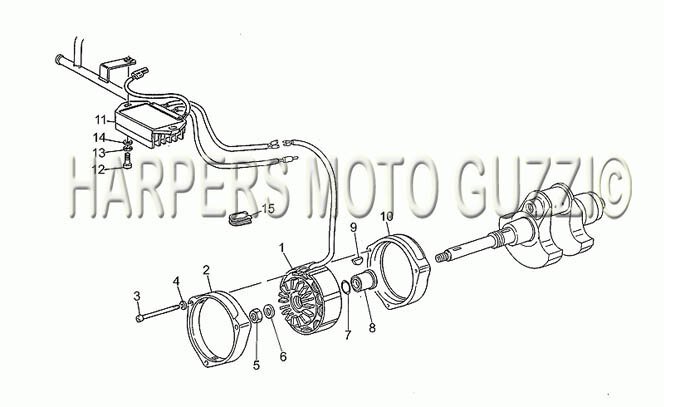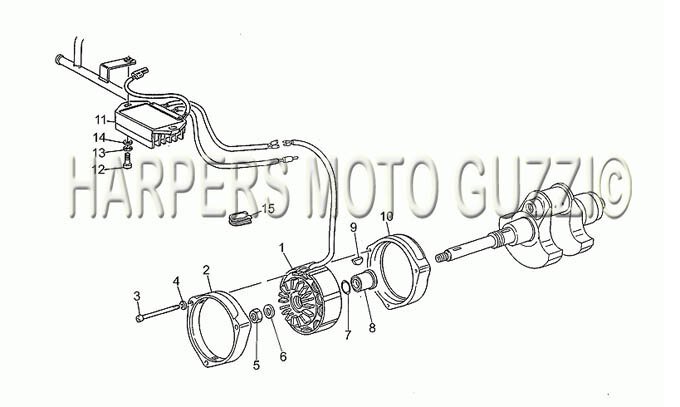-
Posts
1,236 -
Joined
-
Last visited
-
Days Won
42
Content Type
Profiles
Forums
Events
Gallery
Community Map
Everything posted by Pressureangle
-
For what it's worth; My first year roadracing was 1987 on a Suzuki GSXR 750. I raced production, where no modifications beyond suspension were allowed (LOL) but a lot of guys rode the same bike in Superstock, where you could ditch the airbox and use a premium exhaust. Scott Russell showed up with a separate bike for each class; but the Superstock bike still had the airbox and stock exhaust. Since he was sponsored by Yoshimura iirc, I asked about it. His chief said the bike made more power with better delivery with the stock airbox minus filter and the stock muffler gutted than any other combination they'd found. I remember a couple years where the Yamaha FZR 1000 guys kept the stock headpipes and just put cans on the back. Sometimes it's smoke and mirrors. I have Mistral cans on mine, because the PO put the stock mufflers back on and I wanted the noise but I'd be interested in a true side by side dyno comparison of stock vs modified vs cans only. Crossovers have been done.
-
Funny how much that actually matters. Mine has adjustable levers, and if it didn't I'd find some.
-
See #7 and 8. Don't forget a new sealing o-ring. Mine had a nice relief in the crank end of the spacer to fit an additional o-ring for insurance.
-
As an addendum, After installing my gears I developed a front seal leak. I blamed it on the seal, but it turned out to be the seal between the spacer and crankshaft. There's an o-ring inside the spacer sitting in a groove that I didn't see- which was hardened and came out in pieces- and on my '97 there is also a tapered relief in the crank end which was perfect to fit another o-ring as insurance. See # 7 & 8.
-
Finally getting around to fixing. The annoying alternator leak was my fault, not the front cover seal but my inattention to the spacer sleeve o-rings. The rear one was absent (there's a rear one, right? There is now) and the hidden one in the groove was hardened and came out in pieces. Meh. The oil cooler mounting pins were torn from the cooler, and the mounting brackets bent. Apply hammer and JB weld, blast and paint to come. The sidestand bracket snagged on the trailer slot rail hard enough to pull the 6mm screw out of the case, so for your enjoyment a 12mm Time-Sert was installed.
-
I forget if this is your first Goose? If so, you may have Japanese wet clutch expectations. At best, Guzzi dry clutches have a short engagement and at worst are snatchy. My 'Sport takes a practiced hand to pull away smoothly at low rpm. My '89 Mille, even with the big smooth engine and flywheel, takes genuine concern or I'll stall it. The kid's '85 LeMans though, is butter-smooth with a wider engagement than either of the others. But none of them tolerate the carelessness of a good multi-plate wet clutch. They're more like driving a loaded tractor-trailer. Also, if it's been stored, the friction surfaces may be a little rough from 'oxidation'. If so, they'll smooth out considerably with a little usage.
-

Three, yes three grease points on the jack-shaft
Pressureangle replied to LaGrasta's topic in Technical Topics
On my '97 5-speed, I had so much trouble getting to the nipple and modifying grease hose ends I just take the dang wheel out and grease the splines by hand while I'm at it. There's a hole in the swingarm above the zerk, but it's difficult access at best. -

SOS In the shop,which is the fuel pump relay?
Pressureangle replied to mznyc's topic in Technical Topics
I had to disassemble the terminals from my relay board to tighten and DeOxit the terminals to eliminate the intermittent failures and ghosts. Resign yourself to the tedium and you'll be rewarded. -
Since my 'Sport has passed the 25 year mark, and with the real risks obviated by the wreck on the way home from the SSR, I've started acquiring spare parts that I otherwise would not have, even though my hope and expectation is that in 20 years they'll still be collecting dust on the shelf. BTW the 1100 Sport facebook group just posted a Kentucky Carb Sport for sale, looking for venues and values. If I had the garage space I'd buy the whole thing.
- 1 reply
-
- 3
-

-
I think the bolt spacing is different.
-
I don't think it's likely that both injectors failed at the same time. It's more probable that there's a failure in the injector circuit. You should test the injector signal with a noid light.
-
I'm posting this here only because the forum will show that I take PayPal for the Roper slosh plates. PayPal has changed their terms of service in a fashion I find unacceptable, so I've deleted my account and will no longer accept or make payments through them. Cancel Culture and Social Credit Scoring is very real. https://www.dailywire.com/news/new-paypal-policy-lets-company-pull-2500-from-users-accounts-if-they-promote-misinformation
-
I need mirrors for the 1100 sport. I have the stock 'droopy' mirrors on the shelf I can probably work with, if I have to. I had a set of 'whatever' generic Honda CBR mirrors which worked plenty well, but were crapola over time with the finish and hardware deteriorating badly after only one season. Any recommendations at any price point? I can't go with bar end mirrors due to the Kaoko cruise control.
-

Centauro throttle cable too long for casing
Pressureangle replied to 80CX100's topic in Technical Topics
Another possibility, if you're up for the risk, is to move the end ferrule up the cable some. That requires unsoldering and resoldering the ferrule, something that in my experience is not a sure success. -
Wypipo simply will not devote the necessary time to do BBQ correctly. The best I ever had always comes from old black men with a smoky trailer in a parking lot way off the beaten track. Homestead Florida after Hurricane Andrew, and West Point, Mississippi 2007 were the high points. While on the subject of rural cooking, I'll mention the Latino ground-cooked whole pig feasts...
-

Centauro throttle cable too long for casing
Pressureangle replied to 80CX100's topic in Technical Topics
Yeah...uh Back in the days of flat track and no money (I mean, reheating day old pizza on a licence plate atop the 55gallon drum garage furnace money) we used split-shot sinkers pinched on before the ferrule. Zinc is better than lead. The older smarter guys found copper tubing the right size, split it, pinched it over the cable before the ferrule to the same OD and filled it with solder. For the well-funded and connected, they used to make housing extensions in a few increments of length. -
Open circuit voltage should always be system voltage. So if you measure the ground for the injectors (and whatever else) it should show battery voltage when disconnected but nearly zero when attached properly. That is, testing from ground wire to ground. Whatever voltage you see between the ground wire and ground is resistance, and to be eradicated as a connection fault.
-
Speedfrog is right, is my guess. There are a few clues here- First, you had no battery installed so it seems unlikely that anything electrical has changed. Second, your fuel pump failed; Third, your injectors are dry. I'll suggest that both the fuel pump and injectors are plugged with sludge from dried fuel and need a simple cleaning. You can test power to the injectors with a simple 'noid' light, purchased or made from a 6v light bulb and some soldered wire. My hillbilly shade-tree dark side says get some acetone or MEK, some long handled cotton swabs, and wash the injector tips to see if you can start any dribbling that way. In any case, after sitting that long, I'd have the injectors cleaned and replace all the fuel lines anyway.
-
An interesting point to the thread observer; the regulator in question appears to be identical to the one on my '97 Sport-i. Though my battery has always charged, I had suspicions about my system so installed a LED volt display which showed output to be a little weak. Improving grounds brought me to 13.8 volts, which I thought a bit low but I see in the schematic this is the setpoint intended. At this past Spine Raid, and just before, I noticed that the voltage increased to 14.2 and I was pleased but confused; now I have to inspect my reference circuit to see if it's actually overvolting marginally as is the OP's bike here.
-
Ok. The answer lies in notes 1 and 5. The wht/blk connector mate on the frame harness is suspect. You'll have to do some patient sciencing here. Pull the plug very slightly apart so you can measure the actual voltage in from the headlamp circuit. That should measure within .2 volts of battery. If it measures a difference of more than .5 volts, you have a meaningful connection fault. If you measure a high differential, measure at the next accessible point upstream; if the mating connector in the harness is not molded as the regulator side is, probe the wire where it meets the terminal to see if you have a bad crimp. I hate poking holes in wires, but if you have to to measure voltage in the harness before and after the plugs it's necessary. I'd start by chasing the accessible points first. I don't think it will take very long to isolate the problem point. Another point of order is to use your meter to measure differential between the regulator case and battery negative. Though you've run a bypass, it's still important to know the ground is sufficient not to have a differential.
-
I'm not familiar with the particular layout of this regulator. You have 2 input wires from the alternator, yes? Or 3? Then you have a Battery + going out to charge, and a no-charge lamp wire? You might try grounding the bulb wire to see if that's the ground reference.
-

home heating oil rant
Pressureangle replied to mikev's topic in Special place for banter and conversation
The root of the rise in petroleum product prices in the US is that Europe has to import a huge amount to make up for the tomfoolery in Ukraine and Russia. You, and I, are paying for the economic pressure NATO is bringing to bear on Russia. -
That's the harder part. If the reference channel of the regulator (I think all modern regulators sense through the charge wire) has any poor connections, the voltage sensed will be low, causing the regulator to up the voltage output. So next I'd find the first connection from the regulator sense or charge wire, and jumper that directly to battery + to see if that corrects the output. Beware that if you have weak connections in the charge circuit, you could have significant current in your jumper wire, overheating it.
-
The regulator has to sense a voltage differential to know what to do. A possible failure here could be that the regulator is not sensing ground. Use a jumper wire to provide a secure ground to the regulator body, or if it has a ground wire, then between the ground wire and battery negative to see if it makes a difference.
-
Seems like somewhere I remember shaft nuts coming loose being one cause.





